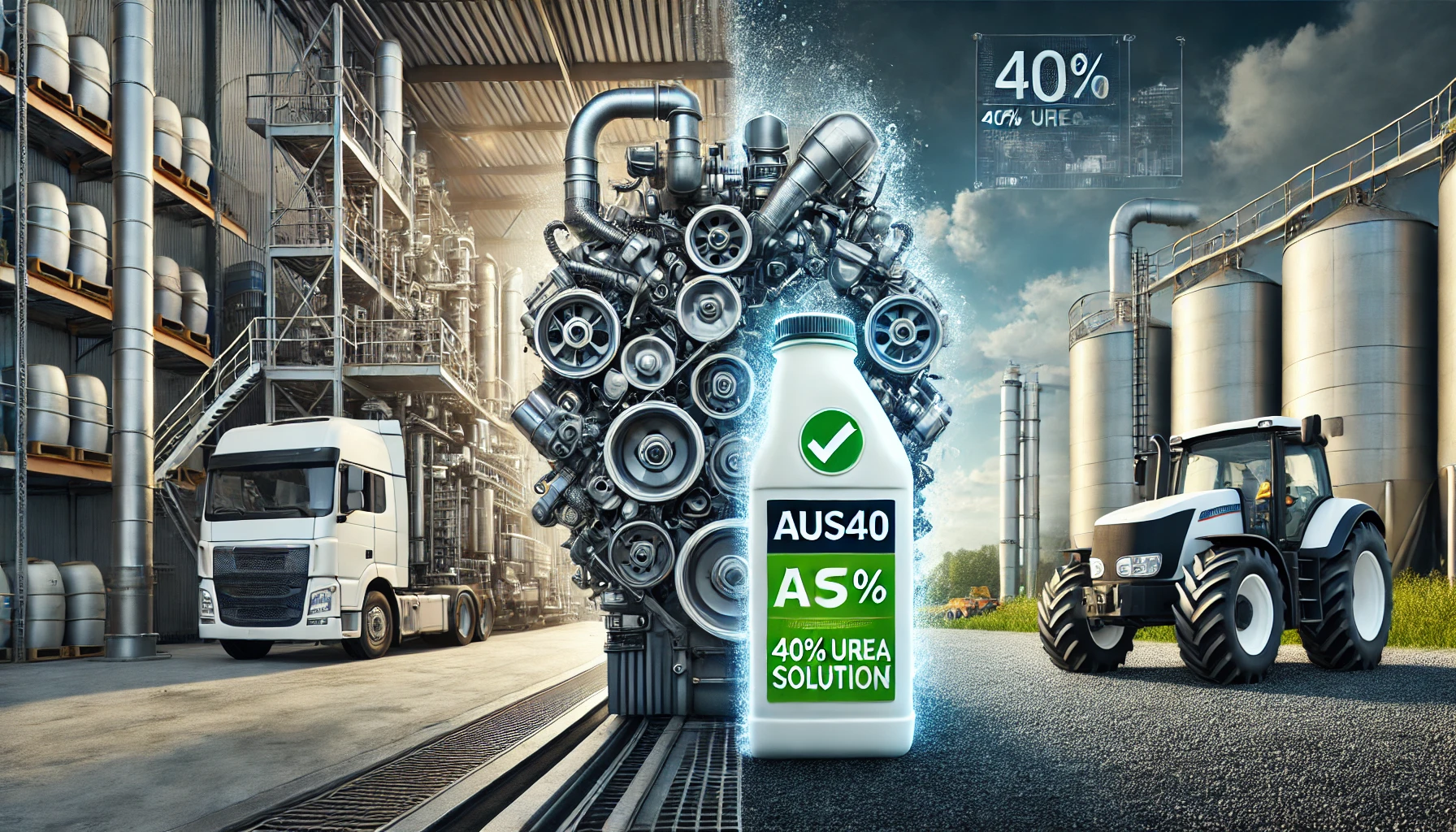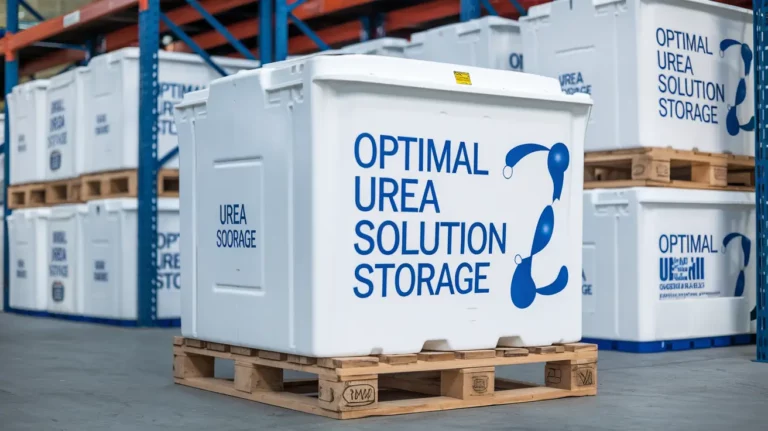AUS40 Urea vs. 40% Urea Solution: What’s the Difference?
For fleet managers and diesel engine operators, understanding the difference between AUS40 and 40% urea solution is crucial for maintaining compliance and optimal engine performance. This guide breaks down everything you need to know about these critical diesel exhaust fluid components.
Understanding the Basics: AUS40 and 40% Urea Solution
At first glance, AUS40 (Aqueous Urea Solution 40) and 40% urea solution might sound identical. However, there are significant differences that impact their effectiveness in diesel exhaust systems. AUS40 is specifically manufactured to meet stringent automotive-grade specifications, while 40% urea solution is a more general industrial product.
Key Differences That Matter
Chemical Composition and Purity
AUS40
AUS40 undergoes rigorous quality control processes to ensure:
- 32.5% high-purity urea content: Ensures optimal performance in SCR systems.
- 67.5% deionized water: Prevents impurities that could damage the system.
- Strict contamination controls: Maintains the integrity of the solution.
- Consistent chemical stability: Provides reliable performance over time.
40% Urea Solution
In contrast, standard 40% urea solution contains:
- 40% agricultural or industrial-grade urea: May contain impurities harmful to SCR systems.
- 60% water (often untreated): Can introduce contaminants that affect performance.
- Variable purity levels: Leads to inconsistent results.
- Less regulated production standards: Increases the risk of quality issues.
Application and Usage
AUS40
AUS40 is specifically designed for:
- SCR (Selective Catalytic Reduction) systems: Reduces NOx emissions effectively.
- Modern diesel engines: Ensures compatibility and performance.
- Meeting EPA emissions standards: Helps maintain regulatory compliance.
- Vehicle warranty compliance: Protects your investment and avoids voiding warranties.
40% Urea Solution
On the other hand, 40% urea solution is typically used in:
- Industrial applications: Suitable for non-automotive uses.
- Water treatment: Used in processes requiring urea.
- Agricultural fertilization: Provides nutrients for crops.
- Non-automotive chemical processes: Utilized in various industrial settings.
Performance Impact
Using the correct solution matters significantly:
AUS40
AUS40 benefits:
- Optimal NOx reduction: Effectively lowers harmful emissions.
- Extended SCR system life: Reduces wear and tear on components.
- Consistent performance: Ensures reliable operation under various conditions.
- Meets manufacturer specifications: Guarantees compatibility and effectiveness.
40% Urea Solution
40% urea solution risks:
- Potential system damage: Impurities can harm SCR components.
- Inconsistent emissions control: May fail to meet regulatory standards.
- Warranty violations: Using non-compliant solutions can void warranties.
- Higher maintenance costs: Increased risk of repairs and replacements.
Cost Considerations and ROI
While 40% urea solution might seem more economical initially, the long-term costs can be substantial:
AUS40
- Higher upfront cost: Initial investment is greater but justified by performance.
- Lower maintenance expenses: Reduces the need for frequent repairs.
- Protected warranty coverage: Ensures your warranty remains valid.
- Reliable performance: Provides consistent results, saving money over time.
40% Urea Solution
- Lower initial investment: Seems cheaper at first glance.
- Higher risk of system damage: Potential for costly repairs.
- Potential warranty issues: Using non-compliant solutions can void warranties.
- Inconsistent results: May lead to higher operational costs.
Industry Standards and Compliance
AUS40
AUS40 meets crucial standards:
- ISO 22241 specifications: Ensures high-quality production and performance.
- API certification requirements: Meets industry-recognized standards.
- OEM warranty requirements: Complies with manufacturer specifications.
- Environmental regulations: Helps meet legal emission standards.
Best Practices for Usage
AUS40
To maximize the benefits of AUS40:
- Store between 20°F and 85°F: Maintains solution integrity.
- Use approved storage containers: Prevents contamination.
- Check expiration dates: Ensures the solution is effective.
- Maintain proper documentation: Keeps track of usage and compliance.
- Regular quality testing: Ensures consistent performance.
Conclusion
Choosing between AUS40 and 40% urea solution isn’t just about concentration levels – it’s about protecting your investment and ensuring regulatory compliance. While the initial cost savings of 40% urea solution might be tempting, the risks to your equipment and potential compliance issues make AUS40 the clear choice for professional fleet operations.
By understanding these differences and adhering to best practices, you can ensure your diesel engines run efficiently, remain compliant with environmental regulations, and avoid costly repairs and downtime. Make the smart choice for your fleet and opt for AUS40 – your engines (and your wallet) will thank you in the long run.






